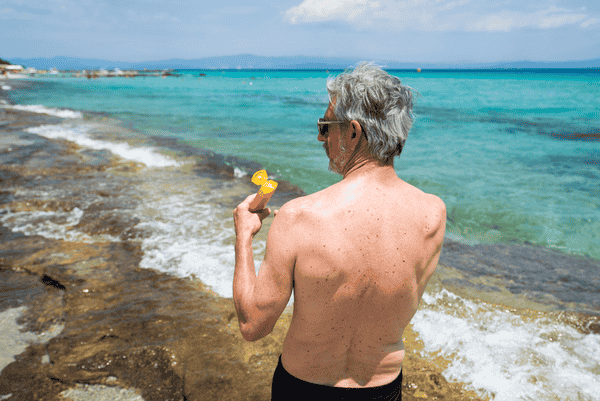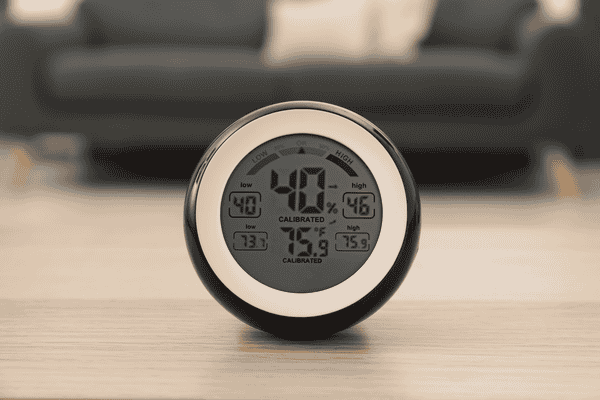As the golden rays of summer begin to paint our world in vibrant hues, they bring with them not just the promise of warmth and leisure, but also a gentle reminder of the delicate nature of our aging skin. Picture a serene morning, the air still crisp with the remnants of dawn, as you step outside to greet the day. The sun’s gentle caress on your skin is a moment of pure bliss, yet it carries with it the potential for both rejuvenation and harm. For those of us embracing the beauty of aging, this dance with the sun becomes increasingly complex, requiring a nuanced approach to skincare that honors both our desire for summer’s joys and our skin’s need for protection and nourishment.
In this comprehensive guide, we’ll embark on a journey through the landscape of summer skincare for aging skin, exploring expert tips, innovative techniques, and the science behind maintaining radiant, healthy skin throughout the warmest months of the year. Whether you’re a seasoned skincare enthusiast or just beginning to navigate the world of anti-aging treatments, this guide will offer insights and strategies to help your skin not just survive, but thrive under the summer sun.
Understanding Aging Skin in Summer: A Delicate Balance
To truly appreciate the intricacies of summer skincare for aging skin, we must first understand the unique challenges that the season presents. As we age, our skin undergoes a series of transformations that can make it more vulnerable to environmental stressors, particularly the intense sunlight and heat of summer.
Dr. Elena Rodriguez, a renowned dermatologist specializing in geriatric skincare, explains, “Aging skin is like a fine tapestry that has weathered many seasons. Its beauty lies in its history, but that same history also makes it more susceptible to damage. The summer months can be particularly challenging, as the skin’s natural defenses are often compromised by the aging process.”
One of the most significant changes in aging skin is the decline in collagen production. Collagen, often referred to as the scaffolding of our skin, provides structure, firmness, and elasticity. As its production slows, we begin to notice the formation of fine lines, wrinkles, and a general loss of skin tone. This process is natural, but exposure to UV rays can accelerate it dramatically.
Moreover, the skin’s ability to retain moisture diminishes with age, making it more prone to dehydration, especially in the heat of summer. The sebaceous glands, responsible for producing the skin’s natural oils, become less active, leading to dryness and potential irritation. This dryness can exacerbate the appearance of fine lines and wrinkles, making proper hydration a crucial component of summer skincare for aging skin.
Another factor to consider is the skin’s decreased ability to repair itself. “As we age, the cell turnover rate slows down,” Dr. Rodriguez notes. “This means that damage from UV exposure and environmental pollutants can accumulate more quickly, leading to age spots, uneven skin tone, and a dull complexion.”
Understanding these changes is the first step in developing a summer skincare routine that addresses the unique needs of aging skin. It’s not about fighting against the natural aging process, but rather about supporting and nurturing our skin through this beautiful journey of life.
The Sun and Aging Skin: A Complex Relationship
The sun has long been both revered and feared in the world of skincare. Its warmth can boost our mood and help our bodies produce essential vitamin D, yet its UV rays are also one of the primary culprits behind premature aging and skin damage. For aging skin, this relationship becomes even more complex.
The Importance of Sun Protection: Your First Line of Defense
Sun protection stands as the cornerstone of any effective summer skincare routine, especially for aging skin. The sun’s UV rays can be broadly categorized into UVA and UVB rays, each affecting the skin in different ways. UVA rays penetrate deeply into the skin, contributing to premature aging and the breakdown of collagen. UVB rays, on the other hand, are responsible for sunburns and play a significant role in the development of skin cancer.
For aging skin, which is already more susceptible to damage, proper sun protection is non-negotiable. Dr. Rodriguez emphasizes, “A broad-spectrum sunscreen with an SPF of at least 30 should be your daily companion, rain or shine. But for aging skin in summer, I often recommend going a step further with SPF 50 or even higher.”
When choosing a sunscreen, look for formulations specifically designed for mature skin. These often contain additional moisturizing ingredients and antioxidants that can provide extra benefits. Physical (or mineral) sunscreens containing zinc oxide or titanium dioxide are often well-tolerated by sensitive aging skin and provide broad-spectrum protection.
Remember, sunscreen is not just for beach days. Apply it generously to all exposed areas of skin, including often-forgotten spots like the ears, back of the neck, and hands. Reapply every two hours, or more frequently if swimming or sweating.
Beyond Sunscreen: Creating a Sun-Smart Lifestyle
While sunscreen is crucial, it’s just one piece of the sun protection puzzle. Embracing a sun-smart lifestyle can significantly reduce your skin’s exposure to harmful UV rays. Consider the following strategies:
- Seek Shade: Especially during the peak sun hours of 10 AM to 4 PM, seek out shaded areas or create your own shade with umbrellas or wide-brimmed hats.
- Protective Clothing: Invest in lightweight, UV-protective clothing. Many brands now offer stylish options that provide excellent sun protection without sacrificing comfort.
- Sunglasses: Protect the delicate skin around your eyes (and your vision) with UV-blocking sunglasses. Look for pairs that wrap around slightly to protect from peripheral light.
- Window Protection: Don’t forget about sun exposure through windows. Consider applying UV-blocking films to the windows in your home and car, especially if you spend a lot of time driving.
By incorporating these sun-smart habits into your daily life, you create multiple layers of protection for your skin, reducing the cumulative damage that can accelerate the aging process.
Hydration: The Key to Radiant Aging Skin
In the heat of summer, maintaining proper hydration becomes even more crucial for aging skin. As we age, our skin’s ability to retain moisture diminishes, making it more prone to dryness, flakiness, and a dull appearance. Combine this with the increased water loss through sweating in summer, and you have a recipe for dehydrated skin.
The Science of Skin Hydration
To understand how to best hydrate aging skin, it’s helpful to delve into the science behind skin hydration. The skin’s outermost layer, the stratum corneum, acts as a barrier to prevent water loss. This barrier is composed of corneocytes (dead skin cells) held together by lipids. In aging skin, this barrier function can become compromised, leading to increased transepidermal water loss (TEWL).
Dr. Sarah Lee, a cosmetic chemist specializing in anti-aging formulations, explains, “Think of your skin’s barrier like a brick wall. The corneocytes are the bricks, and the lipids are the mortar. As we age, this wall can develop cracks and weak spots, allowing moisture to escape more easily. Our goal in hydrating aging skin is not just to add water, but to repair and strengthen this barrier.”
Strategies for Deep Hydration
- Choose the Right Moisturizer: Look for moisturizers that contain a combination of humectants (to attract water), emollients (to soften skin), and occlusives (to lock in moisture). Ingredients like hyaluronic acid, glycerin, ceramides, and niacinamide can be particularly beneficial for aging skin.
- Layer Your Hydration: Consider adopting the Asian beauty technique of layering multiple hydrating products. Start with a hydrating toner or essence, followed by a serum, and then seal it all in with a moisturizer.
- Don’t Forget Your Body: While we often focus on facial skincare, the skin on our body also needs attention. Use a rich body lotion or oil immediately after showering to lock in moisture.
- Hydrate from Within: Drinking plenty of water is crucial, but also consider incorporating hydrating foods into your diet. Watermelon, cucumber, and leafy greens can all contribute to your skin’s hydration.
- Cool Misting: Keep a facial mist in your bag for quick hydration on the go. Look for mists that contain soothing ingredients like aloe vera or thermal spring water.
By prioritizing hydration in your summer skincare routine, you can help your aging skin maintain its plumpness, elasticity, and radiant glow, even in the face of summer’s heat and humidity.
Nurturing Aging Skin: Beyond the Basics
While sun protection and hydration form the foundation of summer skincare for aging skin, there are several other key strategies that can help nurture and protect your skin during the warmer months.
The Power of Antioxidants
Antioxidants play a crucial role in protecting aging skin from environmental damage, particularly during the summer months when exposure to UV rays and pollution can increase. These powerful molecules work by neutralizing free radicals, unstable atoms that can damage skin cells and accelerate the aging process.
Dr. Rodriguez recommends incorporating antioxidant-rich products into your skincare routine, both topically and through your diet. “Vitamin C is a powerhouse antioxidant for aging skin,” she explains. “It not only protects against free radical damage but also helps boost collagen production and can improve the appearance of dark spots.”
Other beneficial antioxidants for aging skin include:
- Vitamin E: Works synergistically with vitamin C and helps protect cell membranes.
- Niacinamide (Vitamin B3): Improves skin elasticity and helps even out skin tone.
- Resveratrol: Found in red grapes, this antioxidant has anti-inflammatory properties.
- Green Tea Extract: Rich in polyphenols, it offers protection against UV damage.
Consider incorporating a vitamin C serum into your morning routine, followed by your sunscreen. For an extra boost, look for sunscreens that also contain antioxidants.
Gentle Exfoliation: Revealing Radiant Skin
Exfoliation can be a powerful tool in your summer skincare arsenal, helping to remove dead skin cells and promote cell turnover. However, for aging skin, it’s crucial to approach exfoliation with a gentle touch.
“As we age, our skin becomes more delicate and can be easily irritated by harsh exfoliants,” cautions Dr. Lee. “I recommend opting for chemical exfoliants like alpha-hydroxy acids (AHAs) or beta-hydroxy acids (BHAs) over physical scrubs.”
AHAs, such as glycolic or lactic acid, work by dissolving the bonds between dead skin cells, promoting their shedding and revealing fresher skin underneath. BHAs, like salicylic acid, can penetrate more deeply into the pores, making them excellent for aging skin that’s prone to congestion.
Start with a low concentration and use these exfoliants 1-2 times a week, gradually increasing frequency as your skin tolerates it. Always follow up with extra hydration and sun protection, as exfoliation can make your skin more sensitive to UV rays.
The Ritual of Self-Care: Nourishing Body and Soul
Summer skincare for aging skin isn’t just about products and routines; it’s also an opportunity to embrace self-care and nurture your overall well-being. Taking time for yourself can reduce stress, which in turn can have positive effects on your skin’s health and appearance.
Consider incorporating relaxing skincare rituals into your routine:
- Facial Massage: Gentle facial massage can improve circulation, reduce puffiness, and provide a moment of relaxation. Use your favorite facial oil or serum and spend a few minutes each evening massaging your face and neck.
- Cooling Face Masks: Keep hydrating sheet masks in the refrigerator for a refreshing and soothing treat on hot summer days.
- Mindful Application: Turn your skincare routine into a mindfulness practice. As you apply each product, take a moment to breathe deeply and appreciate the sensation on your skin.
- Bath Rituals: On cooler summer evenings, indulge in a relaxing bath with epsom salts and a few drops of lavender essential oil. Follow up with a rich body moisturizer to lock in hydration.
By approaching your skincare routine as a form of self-care, you not only nourish your skin but also cultivate a positive relationship with the aging process.
Embracing the Journey: A Holistic Approach to Aging Skin
As we conclude our exploration of summer skincare for aging skin, it’s important to step back and view the bigger picture. Skincare is not just about maintaining a youthful appearance; it’s about honoring the journey our skin has taken through the years and nurturing it with the care and respect it deserves.
Dr. Rodriguez offers a final piece of wisdom: “Aging is a privilege denied to many. Our skin tells the story of our lives – the laughter, the worries, the joys, and the sorrows. A truly effective skincare routine doesn’t try to erase this story but rather helps us write new chapters with confidence and grace.”
As you embark on your summer skincare journey, remember these key takeaways:
- Protect: Sun protection is non-negotiable. Make it a daily habit, rain or shine.
- Hydrate: Nourish your skin from both the inside and outside with ample hydration.
- Nourish: Feed your skin with antioxidants and gentle, effective ingredients.
- Listen: Pay attention to your skin’s changing needs and adjust your routine accordingly.
- Embrace: Celebrate the unique beauty of your aging skin and the life experiences it represents.
By adopting a holistic approach to summer skincare, you can help your aging skin not just weather the season, but truly thrive. Embrace the warmth of summer, the glow of well-cared-for skin, and the beauty of aging with grace and vitality. Here’s to a summer filled with radiant skin and joyful moments under the sun!





